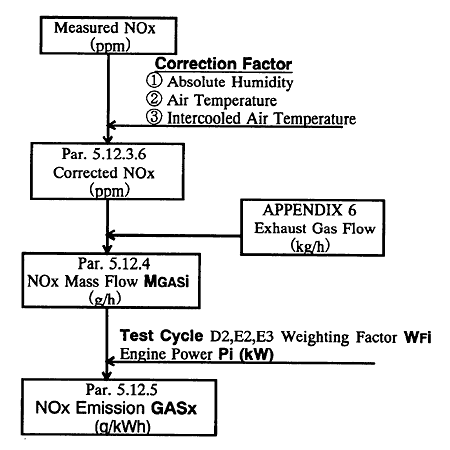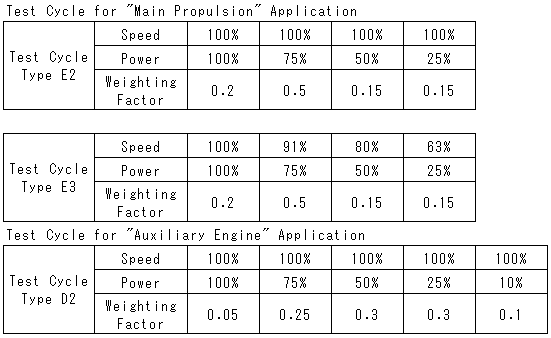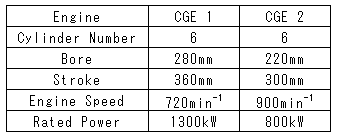
Fig.1 Calculation Flow Chart of NOx Emission (Above mentioned Par. and APPENDIX are included in the NOx Technical Code)
And, in order to clarify the influence of each correction factor on NOx concentration, the authors compared the result of this analysis with the correction formula of NOx Technical Code and discussed.
2. NOx TECHNICAL CODE
Fig.1 shows the calculation flow chart of NOx emission in the IMO's regulatory approach. The result of measurement on concentration(ppm) of NOx emissions from diesel engines must be corrected by considering such factors as absolute humidity(Ha) during engine operation, intake air temperature (Ta) and intercooled air temperature (Tsc).
Correction factor (KHDIES) for diesel engines with intermediate air coolers is presented as Eq.(1)below. TscRef is reference temperature of intercooled air. The TscRef is to be specified by the manufacturer.
NOx concentration must be converted into NOx mass flow(MGASi) by exhaust gas flow. Furthermore, the NOx emission of main propulsion and auxiliary engine types as specified by the NOx Technical Code can be obtained by taking into account the weighting factor(WFi) for each load on the basis of the test cycle, shown in Table 1. For example, on the test cycle type D2, a weighting factor of 0.3 is distributed to the medium and low load zones of 50 percent and 25 percent respectively.
The NOx emission (GASx) is calculated by Eq. (2).


Table 1 Test Cycle

3. NOx EMISSION FROM COGENERATION ENGINES
3.1 Cogeneration Engine Specifications and Measurement
The authors conducted a yearlong research on NOx emission from two cogeneration engines, CGE1 and CGE2, in service at the companyts Moriyama Factory, Shiga Prefecture, from June 1996 to May 1997. In this research NOx concentration was monitored along with engine performances at each operating load, by taking measurements once a week during a time period where the power demand peaked. Fuel oil was simultaneously sampled from the engines and analyzed to examine its properties. Table 2 shows the major specifications of the engines. CGE1 had cylinders 280 mm in bore diameter, ran at 720min-1, and generated 1300kW. CGE2 had cylinders 220 mm in bore diameter, ran at 900min-1, and generated 800kW.
Table 2 Specification Items of CGE

3.2 Fuel Oil Analysis Results
Among fuel oil properties, the cetane index, which represents fuers ignitability, and nitrogen content have an impact on NOx concentration in emissions from the diesel engines. Marine diesel oil has a low nitrogen content, having a small impact on NOx emission from the engines. A reduction in the fuel's cetane index is, however, known to have a great impact on NOx emission. The authors monitored nitrogen content, cetane index and other properties of fuel oil used by the cogeneration engines. The results are given in Fig.2. Fuel oil density was between 0.85 and 0.87. The calculated cetane index ranged from 40 to 50. The nitrogen content included in the fuel oil was 0.02 weight percent or less.
BACK CONTENTS NEXT